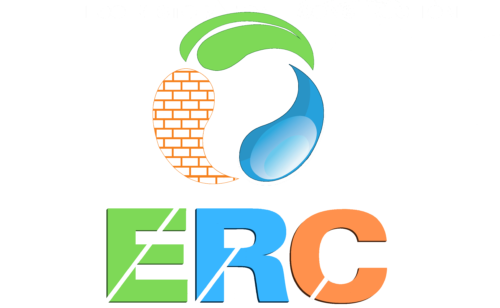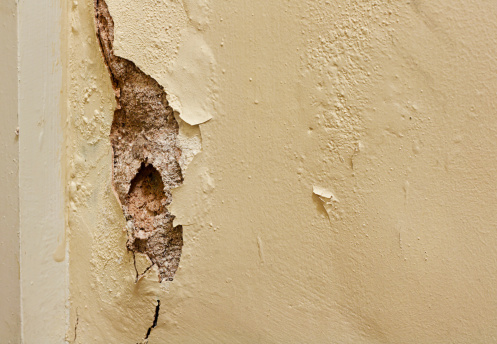Water damage only worsens with time and fosters benign growth by providing the right environment. Extra water and moisture must be removed, and things must be dried immediately. It can result from several things, such as pipe leaks and natural flooding. Your home’s drywall will probably suffer water damage if there is a leak.
Whether the water damage to your drywall was caused by a roof leak, an air conditioner, flooding, or something else, repair work must be done very away.
How long before water damage causes drywall to rot?
You have around 72 hours to complete the necessary cleanup after water damage to your property to stop mold growth. Then, incredibly harmful wood rot and mold can establish themselves on your floors and walls.
A little issue that may be resolved quickly by properly drying your home can become a significant problem that costs thousands of dollars to fix.
How do you dry out damaged walls?
Contain the problem
Find any water leaks close to your walls and fix them. Before moving forward, you must address any sources of moisture in the barriers, such as a burst or leaking pipe, a dripping faucet, or other issues. If the leak is significant, you might need to remove and replace the entire line or fixture.
Remove all materials for better access
The compromised drywall will dry out completely faster the more exposed it is. So, to hasten the evaporation process, consider removing the baseboards, trim, and moldings from your walls. If the dampness hasn’t already ruined the materials, this will also stop them from doing so.
Increase airflow
To boost the airflow to the afflicted area, open windows and doors.
Install fans to direct airflow over the wet walls, which will speed up the drying process. Your water-damaged drywall will benefit significantly from having the extra moisture removed with the use of a dehumidifier.
Repair the drywall
If you took the time to cut out the damaged drywall carefully, you should be left with an area that is simple to patch.
However, you might need to add a backing piece to screw the new component onto it if the patch is applied to a region of the original drywall that has nothing to adhere to.
After the drywall is fastened, you must tape it before applying the mud and sanding it evenly after it has dried. Fiberglass tape will be a better choice if you’ve never dealt with drywall before because it’s sticky and a little more straightforward.
Seek professional help
You can handle some water damage situations on your own. However, there are some circumstances where it’s best to leave the drying out of water-damaged drywall to the experts.
You should get assistance from experts in water damage restoration if the damage is too severe for you to handle and you lack the required tools.
Water professionals have the knowledge and tools to do water dryouts, clean, and restore damaged properties.
What are the common causes of water damage?
The worst aspect of water damage is that it is constantly a possibility. Let’s look at some of the typical reasons why things get wet.
Severe weather
Although thunderstorms, hurricanes, and other natural catastrophes don’t occur frequently, when they do, there is always a chance that your property could sustain water damage.
Strong gusts and torrential rains could damage your roof, allowing some water to fall directly into your house. Even worse, mainly if your property is located in a flood-prone area, severe weather can occasionally cause flash flooding.
Leaking pipes
A kitchen sink’s loose-fitting pipe could leak enough water to harm the cabinet directly below it. The situation could worsen if there were broken pipes inside the walls.
Such a leak can result in significant water damage, which would soak the entire wall and encourage the growth of a large mold colony.
Blocked drains
Your kitchen sink, bathroom floor, and bathtub drains can become clogged for various reasons. Obstructions could hamper drainage in the drainpipe caused by hair, grease accumulation, toiletries, dirt, toys, and other foreign objects.
Clogged drains can easily back up and result in floods and water damage if they are not immediately apparent.
Condensation from the air conditioner
Your air conditioner produces condensation that drips from the unit’s evaporator coil into a catch pan and then away from your home through a condensate drain line. This drainage system is effective up to a crack or obstruction in the condensate drain line or damage to the drain pan.
Water will seep from your AC directly into your home since it can’t escape. Your AC unit’s constant drips might harm the walls and floor.
Frequently asked questions
Can you paint over water-damaged drywall?
The drywall must be dry before painting. To avoid having an uneven job that will be visible every time someone walks across it, make sure all of your walls have at least one coat of paint before continuing because it might be challenging to match the existing color when painting only a tiny stained area that has been affected by water.
How long does for mold to grow on wet drywall?
Mold can develop on moist drywall in just 48 hours.
How long does it take for water damage to dry completely?
In general, parts of your property exposed to water or moisture should dry in about five days, depending on the severity of the water damage. Drying can take as short as two days or as long as several weeks, depending on the environment.
Should you replace the drywall if it gets wet?
While drywall is a versatile and long-lasting material for a home’s interior, it is not water resistant. One of the leading causes of drywall is water damage.
Your drywall can tolerate small amounts of water, but prolonged contact usually results in stains and rotting. Thankfully, replacing drywall is simple and quick.






